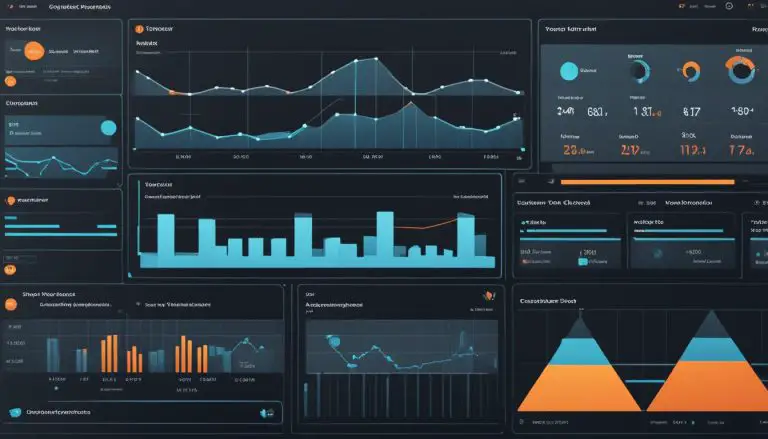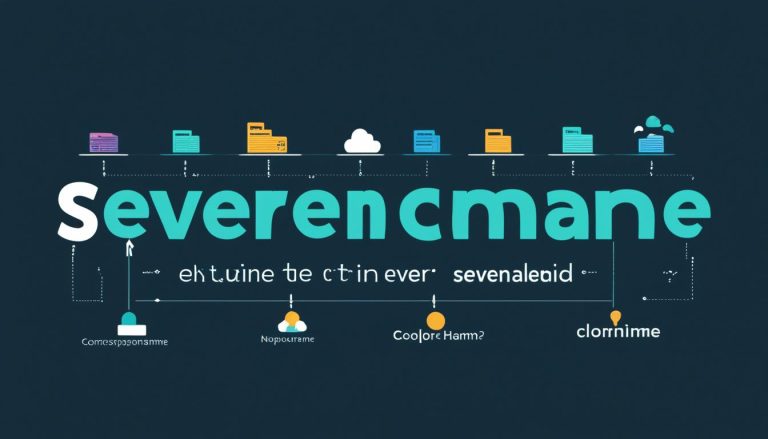Understanding the Basics: What is Data Type Explained
Welcome to the first section of our comprehensive data types tutorial! In this article, I will walk you through the fundamental concepts of data types in programming, providing you with a solid foundation to understand this essential topic.
Before we dive into the intricacies of different data types, let’s start with a simple question: What is a data type? A data type is an attribute associated with a piece of data that informs a computer system how to interpret its value. It plays a crucial role in ensuring data is collected, stored, and processed correctly in a preferred format.
Now that we have defined data types, let’s explore the different types of data commonly used in programming. These include Integer, Floating Point, Character, String, Boolean, Enumerated type, Array, Date, Time, Datetime, and Timestamp. Each of these data types has its unique characteristics and purposes, serving various needs within programming.
Throughout this tutorial, we will discuss each data type in detail, providing examples and explanations to help you grasp their significance and usage. By understanding data types, you will gain a deeper insight into the importance of selecting the appropriate type for your programming needs.
Key Takeaways:
- Data types are attributes associated with data that inform computer systems on how to interpret its value.
- Common data types include Integer, Floating Point, Character, String, Boolean, Enumerated type, Array, Date, Time, Datetime, and Timestamp.
- Understanding data types is crucial for accurate data handling and error prevention in programming.
- By selecting the appropriate data type, programmers can ensure data accuracy and consistency in their code.
- Stay tuned for the upcoming sections where we will dive deeper into each data type, providing examples and practical insights.
Common Data Types
When it comes to programming, understanding the different types of data that can be used is essential. Common data types serve as the building blocks for storing and manipulating information within a computer system. In this section, we will explore some of the most commonly used data types in programming.
Integer
The Integer data type is used to store whole numbers without a fractional component. It can represent negative numbers, zero, and positive numbers. This data type is often used for counting, indexing, and performing mathematical operations. For example, you can use the Integer data type to store values like -10, 0, or 100.
Floating Point
The Floating Point data type is used to store numbers that may have a fractional component. It is commonly used for representing values with decimal points, such as monetary values or measurements. Floating Point numbers can be positive, negative, or zero. Examples of Floating Point values include 3.14, -0.5, or 10.0.
Character
The Character data type is used to store a single letter, digit, punctuation mark, symbol, or blank space. It is commonly used for representing individual characters in a string. Character values are enclosed in single quotes. For example, ‘A’, ‘5’, or ‘#’.
String
The String data type is used to store a sequence of characters and is always treated as text. It can include letters, digits, symbols, and spaces. String values are enclosed in double quotes. For example, “Hello, World!”, or “12345”.
By understanding the common data types mentioned above, programmers are able to define and manipulate various types of data effectively. The proper utilization of data types ensures data accuracy and enhances the efficiency of programming tasks.
Integer
The integer data type is used to store whole numbers without a fractional component. It is commonly used when working with quantities or counting. This data type can represent negative numbers, zero, and positive numbers.
For example, if you have a variable that represents the number of apples in a basket, you would use the integer data type because you can’t have a fractional number of apples. So if the basket contains 7 apples, the value of the variable would be 7.
In programming, you can perform mathematical operations such as addition, subtraction, multiplication, and division with integer values. When using this data type, it’s important to keep in mind that there are constraints on the range of values that can be stored. The specific range may vary depending on the programming language you are using.
Examples of Integer values:
- -20
- 42
Table: Comparison of Integer data type in different programming languages
| Language | Range | Size (in bits) |
|---|---|---|
| Python | -2,147,483,648 to 2,147,483,647 | 32 |
| Java | -9,223,372,036,854,775,808 to 9,223,372,036,854,775,807 | 64 |
| C++ | -2,147,483,648 to 2,147,483,647 | 32 |
Floating Point: Numbers with Decimal Point
The Floating Point data type is used to store numbers that may have a fractional component. It is commonly used for representing values with decimal points, such as monetary values. Floating Point numbers are stored in a computer system using a fixed number of bits, with some bits used to represent the whole number part and some bits used to represent the fractional part. This allows for a wider range of values to be represented compared to the Integer data type.
When working with Floating Point numbers, it’s important to understand that they are not always exact representations of the values they are intended to represent. This is due to the limitations of binary representation in a computer system. As a result, some operations may introduce small errors in the calculated values. It’s crucial to account for these limitations when working with financial calculations or any other application that requires high precision.
“Floating Point numbers are like real numbers, they can be as big as you want or as small as you want, and they can represent values with decimal points. However, due to the binary representation used by computers, there can be some rounding errors. It’s always important to be aware of these limitations and use appropriate techniques to handle them.”
Here is a table that illustrates some examples of Floating Point numbers:
| Floating Point Value | Description |
|---|---|
| 3.14 | A commonly used approximation for the mathematical constant pi. |
| 1.23456 | A arbitrary value with a fractional component. |
| 0.0001 | A small value close to zero with a fractional component. |
In summary, the Floating Point data type is used to store numbers with decimal points. While they offer a wider range of values compared to Integer data type, they are not always exact representations due to the limitations of binary representation in computers. It’s crucial to be aware of these limitations when working with Floating Point numbers and use appropriate techniques to handle any rounding errors that may occur.
Character
The character data type is used to store a single letter, digit, punctuation mark, symbol, or blank space. It is commonly used for representing individual characters in a string. Characters are usually enclosed in single quotation marks (”). Examples of character values include ‘a’, ‘1’, and ‘!’.
When working with characters, it is important to understand that each character is assigned a numerical value based on a character encoding system, such as ASCII or Unicode. This numerical value is what the computer uses to represent the character internally.
Character data types are commonly used in various programming tasks, such as manipulating and processing text, performing string comparisons, and validating input. They play a crucial role in tasks like data validation, parsing, and generating reports where individual character-level operations are required.
Did you know?: In programming, characters are not restricted to letters of the alphabet or common symbols. They can also represent special characters, such as newline (\n), tab (\t), and backspace (\b). These special characters are often used for formatting and controlling the output of text.
Character Data Type Example:
| Character | Numerical Value (ASCII) |
|---|---|
| ‘A’ | 65 |
| ‘0’ | 48 |
| ‘$’ | 36 |
The table above illustrates the relationship between characters and their corresponding numerical values in the ASCII character encoding system. For example, the character ‘A’ is represented by the numerical value 65. This makes it possible for computers to handle characters as data and perform operations based on their assigned values.
String: Storing and Manipulating Text
The String data type is used to store a sequence of characters and is always treated as text. It is widely used in programming for managing and manipulating textual information. Strings can include letters, digits, and symbols, allowing developers to work with both alphanumeric and special characters.
Strings are essential for tasks such as input validation, data manipulation, and generating dynamic content. They enable developers to perform operations like concatenation, substring extraction, searching for specific patterns, and much more. Additionally, strings can be formatted and displayed in various ways to enhance the user experience.
“Working with strings is a fundamental aspect of programming. It involves various operations, such as string concatenation, substring extraction, and pattern matching. By understanding the capabilities of the String data type, developers can harness its power to create efficient and robust applications.”
Example: Manipulating a String
Let’s take a look at an example to understand how strings can be manipulated in programming:
| Task | Example |
|---|---|
| Concatenation | “Hello” + “World” = “HelloWorld” |
| Substring Extraction | “HelloWorld”.substring(0, 5) = “Hello” |
| Searching | “HelloWorld”.indexOf(“World”) = 5 |
| Length | “HelloWorld”.length() = 10 |
As shown in the example, strings can be concatenated using the “+” operator. Substring extraction enables developers to extract a portion of a string based on specified indices. Searching within a string can be done using the “indexOf” method, which returns the index of the first occurrence of a specified substring. The “length” method allows developers to retrieve the number of characters in a string.
In conclusion, the String data type provides developers with powerful tools for working with textual information. By leveraging the capabilities of strings, developers can create applications that efficiently manipulate, validate, and present text-based data.
Boolean Data Type: True or False Values
The Boolean data type is an important concept in programming, as it represents values that can be either true or false. It is a fundamental data type that forms the basis of logical operations and conditional statements. With Boolean variables, programmers can control the flow of their code based on specific conditions.
Boolean values are typically used to determine whether a certain condition is met or not. For example, in a program that checks whether a user is logged in, a Boolean variable could be set to true if the user is authenticated and false if they are not. This allows the program to make decisions and execute different actions based on the Boolean value.
In programming languages, true is often represented by the value 1 and false by the value 0. However, it’s important to note that some languages may have their own representations for true and false. It’s crucial to understand the specific conventions of the programming language you are working with.
Examples:
| Expression | Result |
|---|---|
| 2 > 1 | true |
| 5 == 5 | true |
| 8 | false |
Boolean data types are essential for decision-making and branching logic in programming. They allow developers to create dynamic and interactive applications that can respond to different inputs and conditions. Understanding how to use Boolean values effectively is a key skill for any programmer.
Enumerated Type: Predefined Unique Values
An enumerated type is a data type that represents a small set of predefined unique values. It is commonly used when we have a limited number of options to choose from. Each value in an enumerated type has a corresponding numeric or text-based representation. By using an enumerated type, programmers can ensure that variables only take on valid values, enhancing the reliability and clarity of the code.
Enumerated types are particularly useful in situations where a variable can only have a specific set of values. For example, in a program that classifies colors, an enumerated type can be used to define valid color options such as red, blue, and green. This ensures that the variable can only contain one of these predefined options, making it easier to handle and preventing errors caused by invalid inputs.
To declare an enumerated type, programmers typically use keywords such as “enum” or “enum class” followed by the name of the enumerated type and a list of valid values enclosed within braces. Each value is separated by a comma, and it can be assigned a specific numerical or text-based representation. Once the enumerated type is defined, variables can be declared using the enumerated type as their data type, allowing them to take on only the valid values specified.

Example of Enumerated Type in C++:
In this example, an enumerated type “Color” is defined with three valid values: RED, BLUE, and GREEN. A variable “myColor” is declared using the “Color” data type and assigned the value BLUE. The if statement checks if the value of “myColor” is equal to GREEN, demonstrating how enumerated types can be used in conditional statements.
Enumerated types provide a clear and concise way to define and work with a limited set of values in programming. By using them, programmers can ensure data integrity, improve code readability, and minimize the possibility of errors arising from invalid inputs.
Table: Example of Enumerated Type
| Color | Representation |
|---|---|
| RED | |
| BLUE | 1 |
| GREEN | 2 |
The Array Data Type: Storing and Manipulating Lists of Elements
An array is a versatile data type used in programming to store a list of elements of the same type. Arrays allow for efficient organization and manipulation of data, making them essential tools for many programming tasks. In an array, each element is assigned a unique index, starting from 0, which allows for easy access and modification of specific values within the list.
The main advantage of using arrays is their ability to store and process large amounts of data in a structured manner. By storing related data in an array, you can perform operations on the entire list or access specific elements using their index. This makes arrays particularly useful for tasks such as sorting, searching, and performing mathematical calculations on multiple values at once.
Arrays are commonly used in various programming languages and are especially valuable when dealing with repetitive tasks or when managing collections of related data. For example, an array can be used to store a series of test scores, a list of employee names, or the elements of a shopping cart. Arrays can be easily created and modified, allowing for dynamic changes to the list of elements as needed.
Let’s take a look at a table that illustrates the concept of arrays:
| Index | Element |
|---|---|
| apple | |
| 1 | banana |
| 2 | orange |
| 3 | grape |
This table represents an array of fruits, where each row corresponds to an index and the element stored at that index. In this case, the array contains four elements: apple, banana, orange, and grape. By accessing the elements using their respective indices, you can retrieve or modify specific values within the array.
Arrays are powerful tools for organizing and manipulating data, offering flexibility and efficiency in various programming tasks. Their ability to store lists of elements of the same type makes them invaluable in managing collections and performing operations on multiple values simultaneously.
Date, Time, Datetime, Timestamp
In programming, dealing with date and time values is a common task. To represent and manipulate these values, various data types are used, including Date, Time, Datetime, and Timestamp.
The Date data type is used to represent a specific date. It follows the format YYYY-MM-DD, where YYYY represents the year, MM represents the month, and DD represents the day. This data type is commonly used for tasks that involve tracking events or managing schedules.
The Time data type, on the other hand, is used to represent a specific time. It follows the format hh:mm:ss, where hh represents the hours, mm represents the minutes, and ss represents the seconds. This data type is often used for tasks that require precise time measurements, such as recording timestamps for events or tracking durations.
The Datetime data type combines both date and time values into a single data type. It allows for the representation of a specific point in time, capturing both the date and the time. This data type is useful for tasks that involve time-related calculations or when dealing with events that occur at a specific moment.
The Timestamp data type, on the other hand, represents the number of seconds that have elapsed since a specific reference point, often referred to as the Unix epoch. It is commonly used for tasks that require tracking the passage of time or for generating unique identifiers based on the current time.
Conclusion
In conclusion, understanding data types is crucial in programming. Each data type has its own purpose and characteristics, ensuring that data is collected, stored, and processed accurately. By choosing the appropriate data type, programmers can prevent errors and ensure data integrity.
We have explored common data types such as Integer, Floating Point, Character, String, Boolean, Enumerated type, Array, Date, Time, Datetime, and Timestamp. Integer is used for whole numbers, Floating Point for numbers with a decimal point, Character for individual letters or symbols, String for sequences of characters treated as text, Boolean for true or false values, Enumerated type for a small set of predefined values, Array for a list of elements, and Date, Time, Datetime, and Timestamp for representing specific dates and times.
Overall, data types play a vital role in programming. They ensure the accuracy and consistency of data, enabling software systems to function smoothly and efficiently. By understanding the basics of data types, programmers can leverage their benefits and create robust and reliable applications.
FAQ
What is a data type?
A data type is an attribute associated with a piece of data that tells a computer system how to interpret its value.
Why are data types important?
Data types ensure that data is collected in the preferred format and the value of each property is as expected.
What are some common data types?
Common data types include Integer, Floating Point, Character, String, Boolean, Enumerated type, Array, Date, Time, Datetime, and Timestamp.
What is an Integer?
Integer is a numeric data type used to store whole numbers without a fractional component.
What is a Floating Point?
Floating Point is a numeric data type used to store numbers that may have a fractional component.
What is a Character?
Character is a data type used to store a single letter, digit, punctuation mark, symbol, or blank space.
What is a String?
String is a data type used to store a sequence of characters and is always treated as text.
What is a Boolean?
Boolean is a data type representing true or false values.
What is an Enumerated type?
Enumerated type is a data type that represents a small set of predefined unique values.
What is an Array?
Array is a data type used to store a list of elements in a specific order.
What are Date, Time, Datetime, and Timestamp?
Date represents a date, Time represents a time, Datetime represents both date and time together, and Timestamp represents the number of seconds since 1970.
- About the Author
- Latest Posts
Claudia Rothenhorst ist Medien- und Reise-Redakteurin bei der Web-Redaktion. In ihrer Freizeit reist sie gerne und schreibt darüber unter anderem auf Reisemagazin.biz.
Weitere Artikel von Ihr erscheinen u.a. im Blog der Webagentur Awantego.






